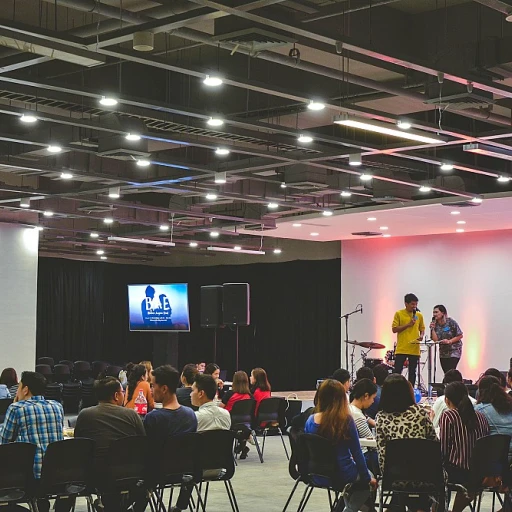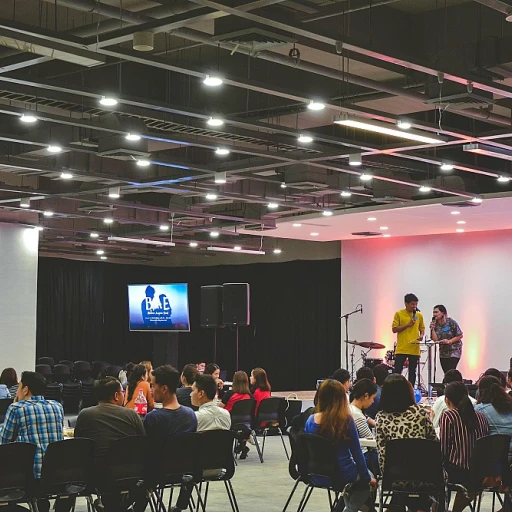
Understanding DEI in the Candidate Experience
Defining the Role of DEI in Candidate Experience
The role of Diversity, Equity, and Inclusion (DEI) in the candidate experience is crucial. DEI initiatives are no longer optional in the recruitment process; they are essential to attracting and retaining top talent. As organizations unlock the potential for dynamic candidate experiences through DEI, they break down barriers and encourage a more inclusive workplace. A successful DEI strategy in recruitment ensures that diverse candidates feel respected and valued upon their first interaction with a company. It starts with the job descriptions, creating a foundation for removing unconscious bias from the hiring process. In this context, companies must focus on using inclusive language that resonates with diverse talent pools. The candidate experience, when enriched by thoughtful DEI efforts, translates into a more engaging and equitable hiring process. This directly contributes to improved overall talent acquisition as candidates from various backgrounds feel confident and empowered to be part of an inclusive organizational culture. As part of creating an inclusive candidate experience, companies must also consider their organizational culture. By showcasing a culture that actively supports diversity and inclusion, organizations can make candidates feel like integral parts of their mission long before a job offer is made. For more insights on enhancing employee interactions from the outset, read about effective onboarding strategies. In creating and nurturing DEI-focused candidate experiences, organizations pave the way for a more diverse and successful future by actively addressing and promoting diversity, equity, and inclusion from the ground up.Current Trends in DEI and Employer Branding
Innovative Approaches to Diversity and Equity
In recent years, there has been a significant evolution in how companies approach diversity, equity, and inclusion (DEI) within their recruitment strategies. Forward-thinking organizations are increasingly recognizing that an emphasis on DEI can substantially enhance their employer brand and attract top talent. By prioritizing diverse hiring practices, companies can build more dynamic and inclusive workplaces.
An important trend gaining traction is the integration of unconscious bias training for hiring teams. This approach helps recruiters understand and mitigate subconscious preferences that may affect hiring decisions. Companies are also revisiting their job descriptions to ensure that the language used does not inadvertently deter diverse candidates from applying. Making descriptions neutral and inclusive fosters a sense of belonging from the outset of the recruitment process.
Leveraging Technology for Inclusive Recruitment
The role of technology cannot be overlooked in the modern recruitment landscape. Many organizations are adopting advanced tools to support diversity recruitment. For instance, AI-powered platforms can anonymize applications, allowing hiring managers to make decisions purely based on skills and experience, thereby reducing bias.
Another notable trend is the enhancement of candidate engagement through digital platforms tailored to promote inclusivity. These platforms enable personalized interactions with candidates, ensuring they feel valued and respected throughout the hiring process. This approach not only enriches the candidate experience but also reinforces a company’s commitment to DEI principles.
Building an Inclusive Company Culture
Successful DEI efforts extend beyond the recruitment process. Companies are increasingly embedding DEI principles into their core organizational culture. By fostering an inclusive workplace, where every employee feels seen and heard, companies not only retain diverse talent but also enhance their overall performance and innovation.
To create such an environment, companies are focusing on welcoming strategies for new hires, ensuring their onboarding processes are inclusive and provide a positive start. These efforts are vital in cultivating a sense of equity and belonging among new employees right from day one.
The intersection of DEI initiatives with a company's culture demonstrates a commitment to not only hiring diverse employees but also supporting them throughout their career journey. This comprehensive approach helps organizations stand out as leaders in DEI, ultimately enhancing their talent acquisition efforts.
Challenges in Implementing DEI Strategies
Navigating DEI Implementation Challenges in Recruitment
Many organizations face significant obstacles when integrating DEI into their recruitment process. To successfully create an inclusive workplace, it's crucial to identify and understand these challenges which hinder the attraction and retention of diverse talent. One of the most persistent issues is unconscious bias. This can manifest at various stages of the hiring process, from crafting job descriptions to conducting interviews. Unconscious biases can lead decision-makers to favor specific candidates that fit a certain mold, often overlooking talented individuals from diverse backgrounds. Raising awareness and establishing structured evaluations can help reduce such biases, thereby promoting equity. Additionally, companies often struggle with aligning their DEI initiatives with their overall company culture. A genuine commitment to diversity, equity, and inclusion should stem from the organization’s core values and be evident in every interaction and communication. It's not merely about ticking a box but about fostering an atmosphere where every candidate feels valued. The lack of clearly defined metrics for measuring DEI efforts also poses a significant hurdle. Without proper evaluation metrics, it's challenging to ascertain the success or failure of initiatives aimed at enhancing candidate experience. Companies need to establish concrete DEI recruitment goals, continuously monitor progress, and adjust strategies based on data-driven insights. Moreover, existing recruitment frameworks may not be conducive to an inclusive hiring process. For instance, traditional job descriptions often use gender-coded language or highlight skills and experiences more likely to be associated with certain demographics. Updating these descriptions to be more role-specific and inclusive can broaden the recruitment net, attracting a wider pool of diverse candidates. For organizations looking to overcome these challenges, practical solutions include investing in bias training for talent acquisition teams, developing inclusive hiring practices, and fostering an open dialogue about diversity, equity, and inclusion in the workplace. Cultivating a high-performance culture in modern workplaces also plays a pivotal role in attracting top talent across diverse backgrounds, facilitating a more holistic DEI approach. Through a committed effort to tackle these challenges, organizations not only improve their candidate experience but also enhance their competitiveness in attracting diverse talent.Best Practices for Enhancing DEI in Recruitment
Proven Strategies to Strengthen DEI in Recruitment
Implementing Diversity, Equity, and Inclusion (DEI) strategies within the recruitment process demands a comprehensive approach to attract diverse candidates and create an inclusive hiring environment. Here are proven strategies that can significantly enhance DEI efforts in recruitment:- Develop Inclusive Job Descriptions: Craft job descriptions that attract diverse talent by using inclusive language. Avoid gender-biased terms and ambiguous jargon that may deter candidates from underrepresented groups.
- Implement Structured Interviews: Structured interviews, with set questions for all candidates, help eliminate bias and ensure consistency. This method allows organizations to fairly assess each candidate’s capabilities.
- Leverage Diverse Talent Networks: Tap into diverse talent networks and niche job boards dedicated to underrepresented groups. Engaging with these platforms expands the reach to a wider pool of diverse candidates.
- Address Unconscious Bias: Train hiring managers and recruiters to recognize and mitigate unconscious bias in the recruitment process. This awareness fosters a more equitable and inclusive environment.
- Enhance Candidate Experience: Prioritize a seamless and respectful candidate experience by ensuring all touchpoints reflect the organization's commitment to inclusion. This approach helps attract top talent that values such organizational culture.
- Foster an Inclusive Workplace Culture: Developing an inclusive workplace is crucial. Candidates are more likely to join and remain with a company where they feel their identities are respected and supported.
Measuring the Impact of DEI on Candidate Experience
Evaluating the Success of DEI within the Recruitment Spectrum
Measuring the impact of diversity, equity, and inclusion (DEI) initiatives on the candidate experience is vital to ensure these strategies drive meaningful change within the hiring process. Enhancing DEI efforts can help organizations attract top talent, particularly from diverse backgrounds, ultimately enriching the company culture with a broader range of perspectives. To accurately assess the effectiveness of DEI initiatives, companies can focus on several key indicators:- Candidate Feedback: Gathering input directly from job candidates regarding their experience can provide valuable insights. Creating a feedback loop shows candidates the organization values diversity and aims to foster an inclusive environment.
- Diversity Metrics: Tracking the representation of diverse candidates within the recruitment process is essential. By analyzing recruitment data, organizations can identify areas of unconscious bias and adjust strategies to attract a broader pool of diverse talent.
- Retention Rates: High turnover amongst diverse candidates might indicate underlying issues in the inclusive culture or bias within the organization. Tracking these rates helps companies adjust their DEI strategies accordingly.
- Inclusion Perception: Conducting surveys that focus on the experience and perception of equity inclusion within the workplace can highlight strengths and potential areas for improvement.













